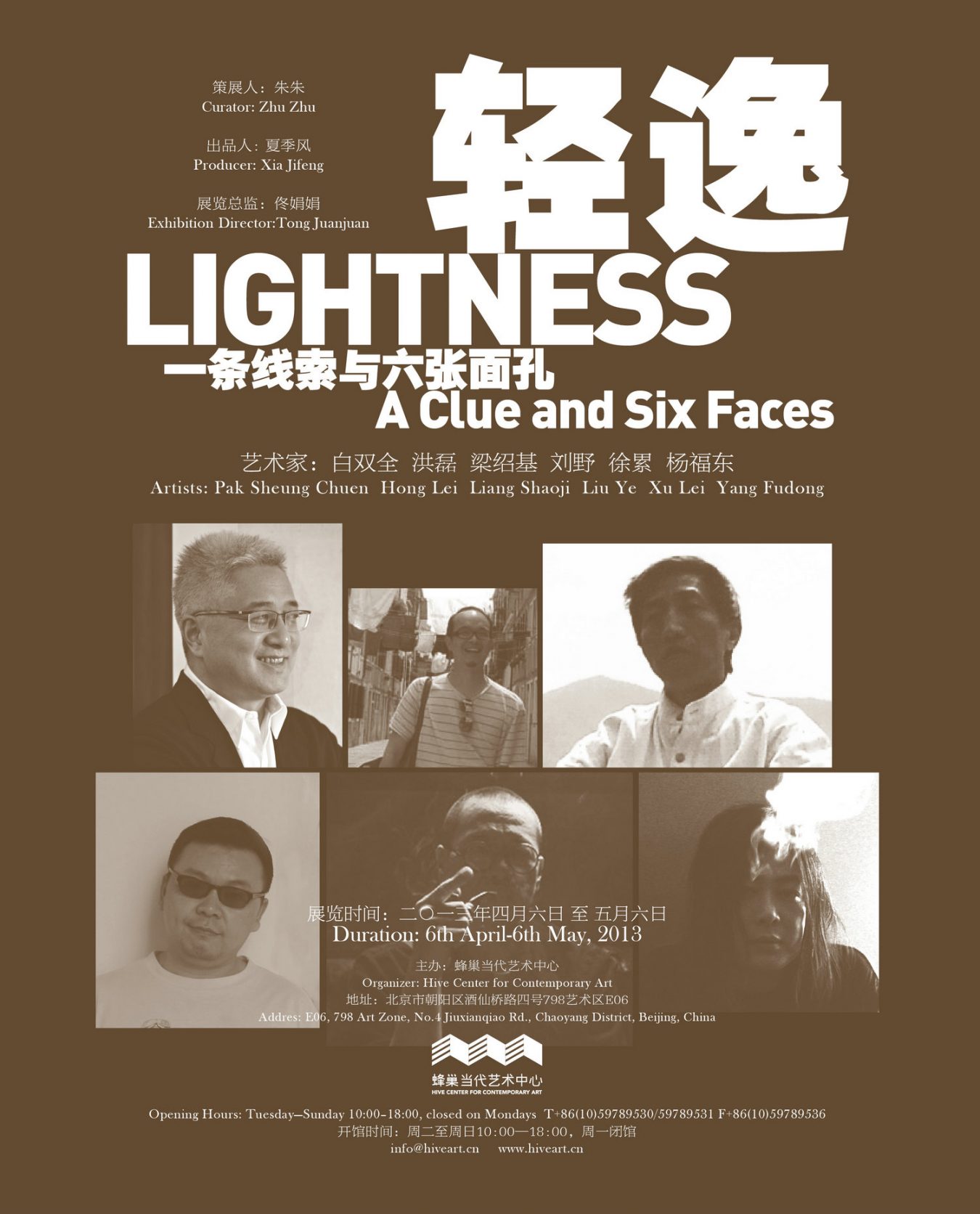In 2013 April, Hive Center for Contemporary Art will launch the exhibition Lightness: A Clue and Six Faces, as the first art project since renamed.
Selected by HCCA and the curator Zhu Zhu, this exhibition features the most representative artists of different media and of different fields: Bai Shuangquan, Hong Lei, Liang Shaoji, Liu Ye, Xu Lei, Yang Fudong, to highlight the force and depth of “lightness” as an element in art. There is absolutely no denying that these excellent and conscious artists have already established their indisputable positions in the world of art, and their influences have spread across the borders between art and the other fields. Besides, “Lightness” is not only a common denominator in their varied art personalities but also a clue to their art practice.
“Lightness” has been given more and more weight around the world since being defined by Italian writer Calvino as the primary quality of art for the coming millennium in Norton Lecture in 1985. As he explained in the lecture, “lightness” is a language and a structure of expression, a way to perceive the heavy facts of our life from another perspective and from another logic. The “lightness” of thoughtfulness is different from “frivolity” and is a staunch partner to accuracy and firmness. In the meanwhile, by containing and responding to weight, it becomes a positive and transcendental value.
In the history of Chinese classical aesthetics, “lightness” might be found in the context of ” works of lightness (Yi Pin)”. In contrast to “the work of divinity (Shen Pin)” which advocates Confucian moral, a “work of lightness” is more directed at the Taoist pursuit of naturalness. There are also dialogues between these two types of art practice. Li Sizhen and Dong Qichang had a great regard for “works of lightness”, while Ni Zan once commented that his bamboos were expressive of the lightness of his mind. The two examples here prove the value of lightness in our study.
The current scene of modern Art in China is dominated by antagonism of political tones, social intervention, satire of reality, self-advertisement, strategic attacks coupled with rounds of spree of expressions. There is obviously a sign of roughness, lack of taste and even speculation. The aesthetic principle of “independent personality and liberal mind” that freely and gracefully shuttles between reality and fantasy is not given due respect and discussion. So does the art that intervene social reality by curing the human nature with the kind of politic discussed by E.W. Said. This exhibition aims to name and clarify an aesthetic quality, its past and present, as well as to search for a possible future for art.
Covering hall A, hall B and hall C of the refined exhibition space, ”Lightness: A Clue and Six Faces” will last for one month. Meanwhile, another two long-term art projects conceived by Hive Center for Contemporary Art: “Hive·Becoming – Young Artists Project Empty Baggage – Solo Exhibition of He Xun” and “Superfluous Things No.1: Shen Liang Solo Exhibition” will open during the same period.


